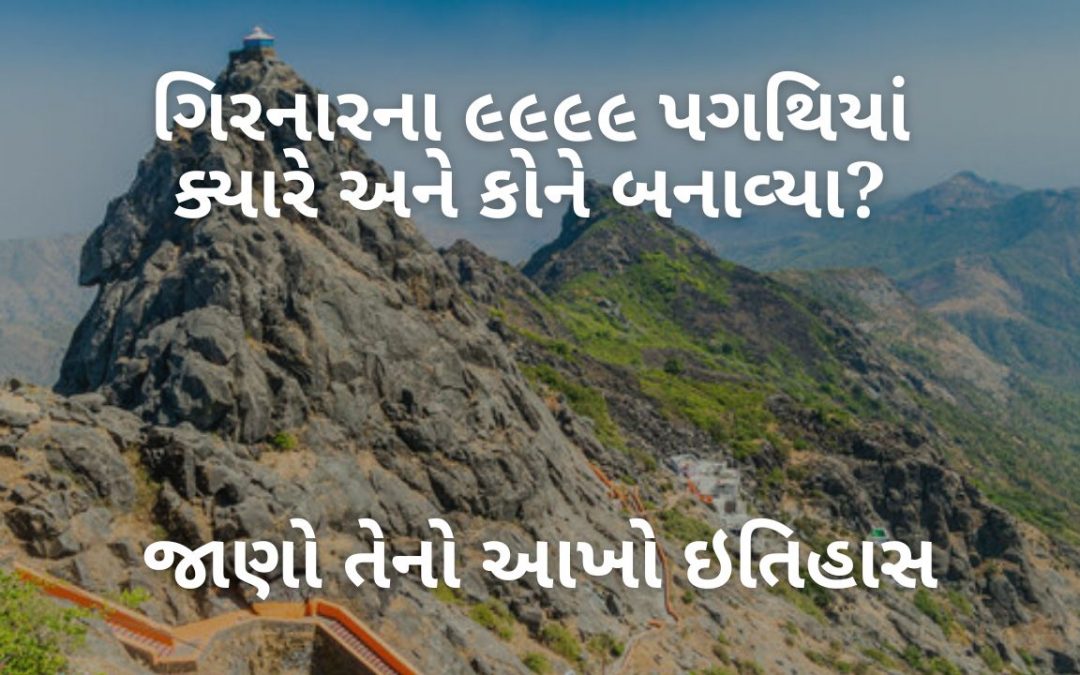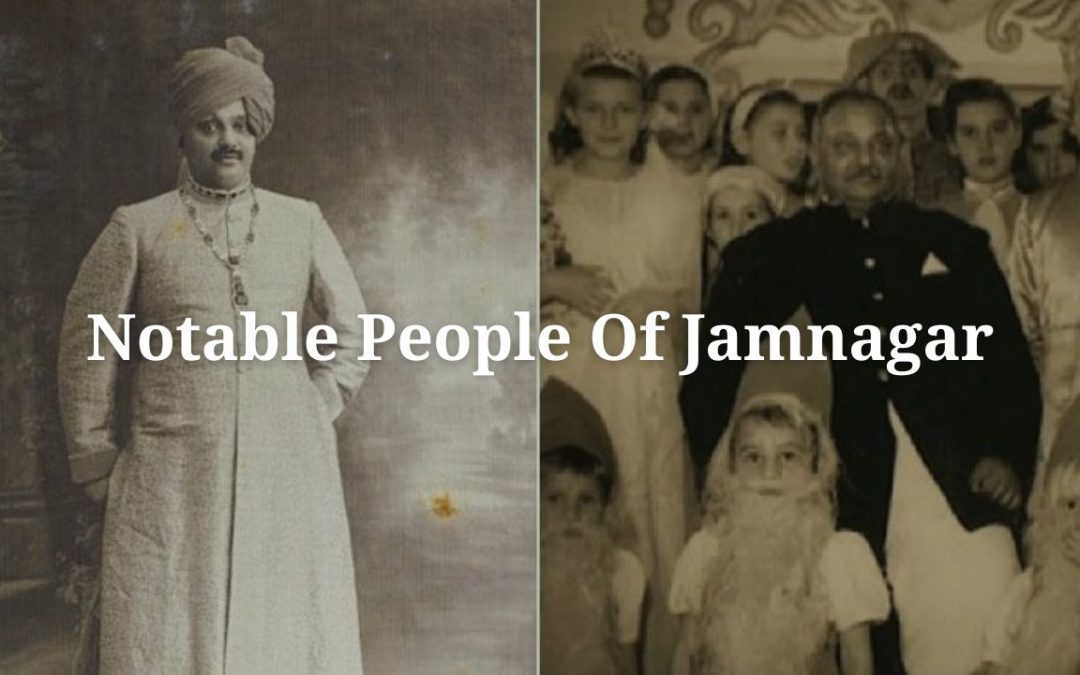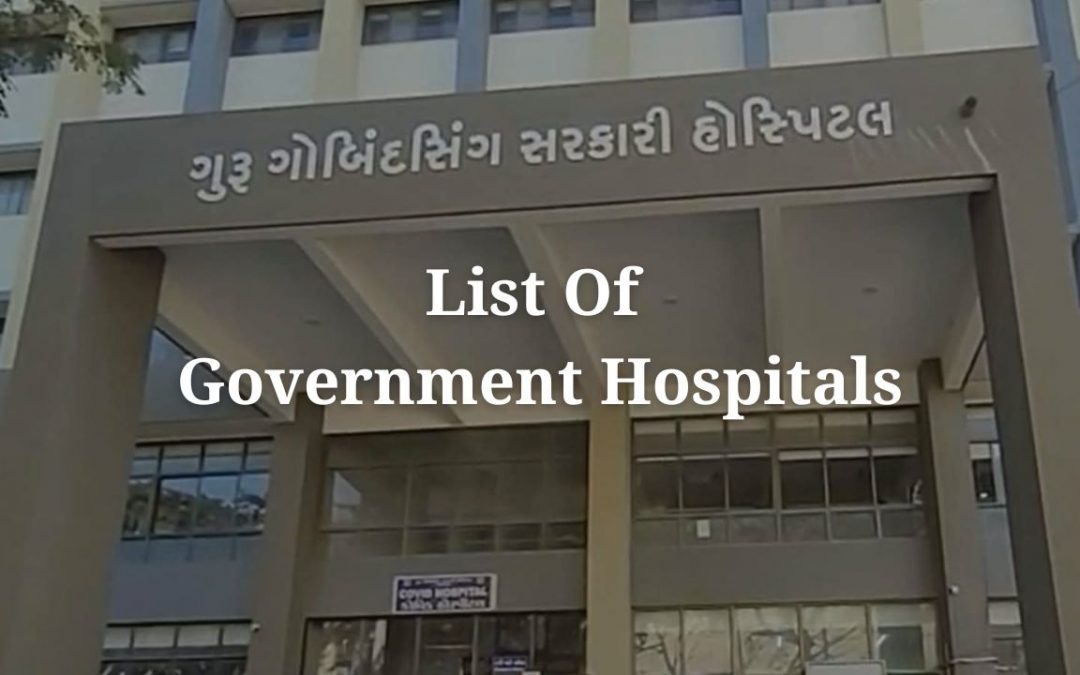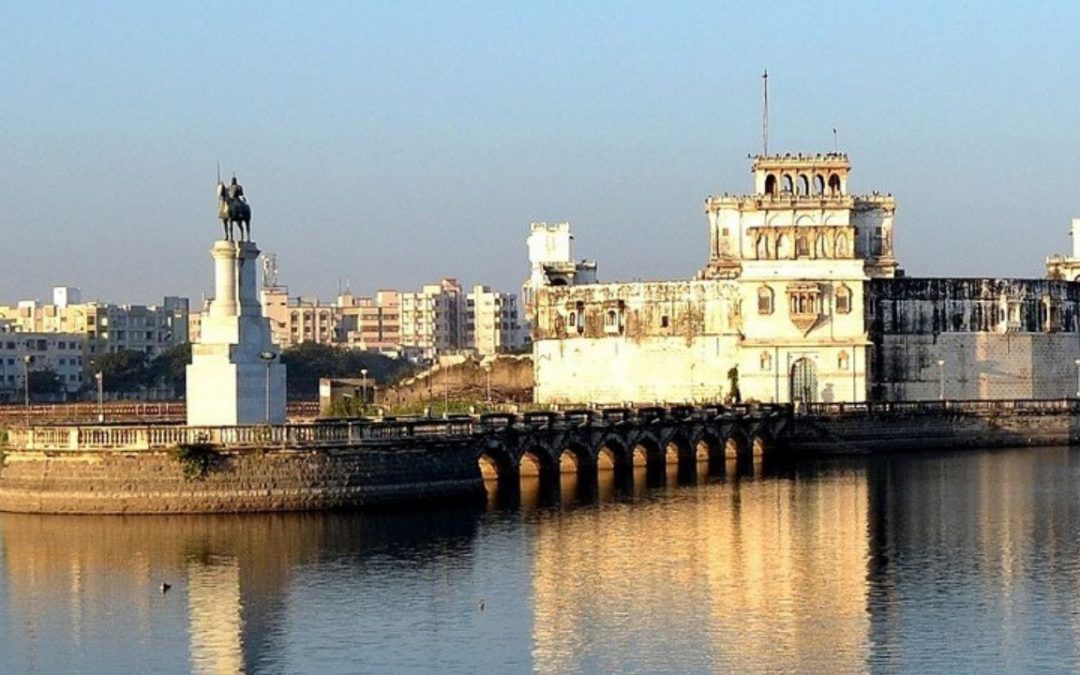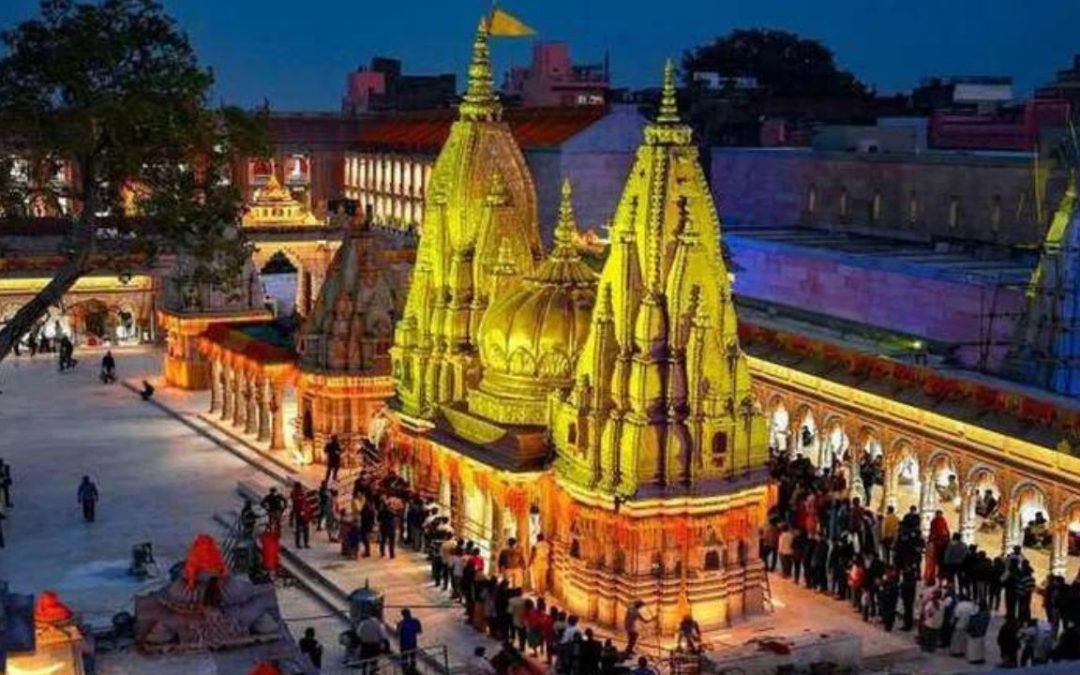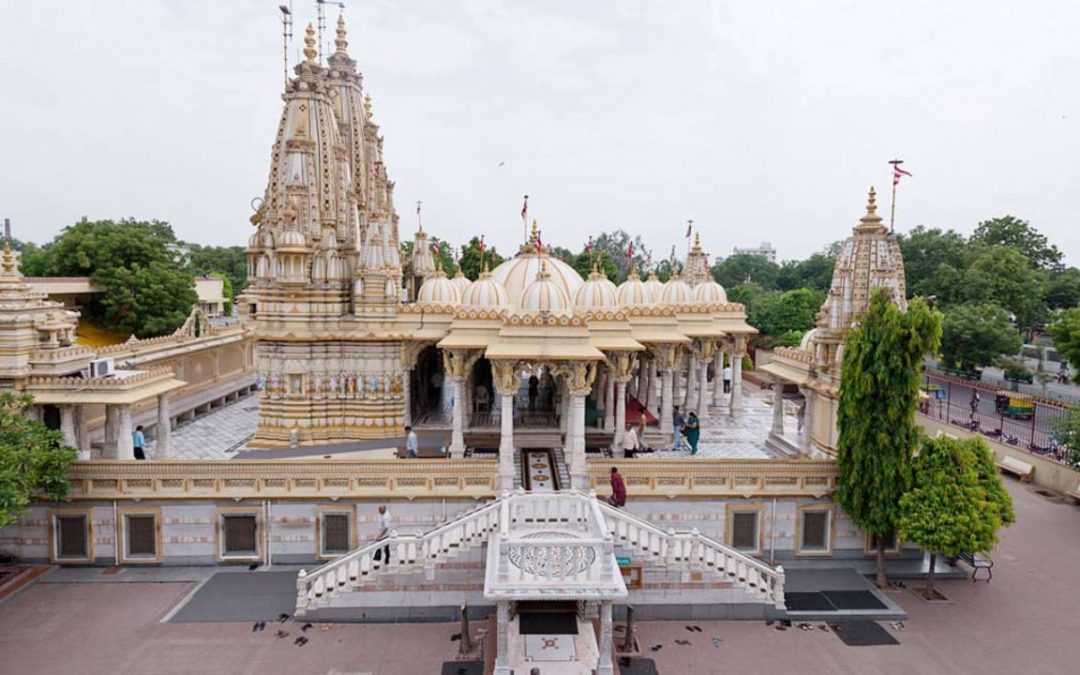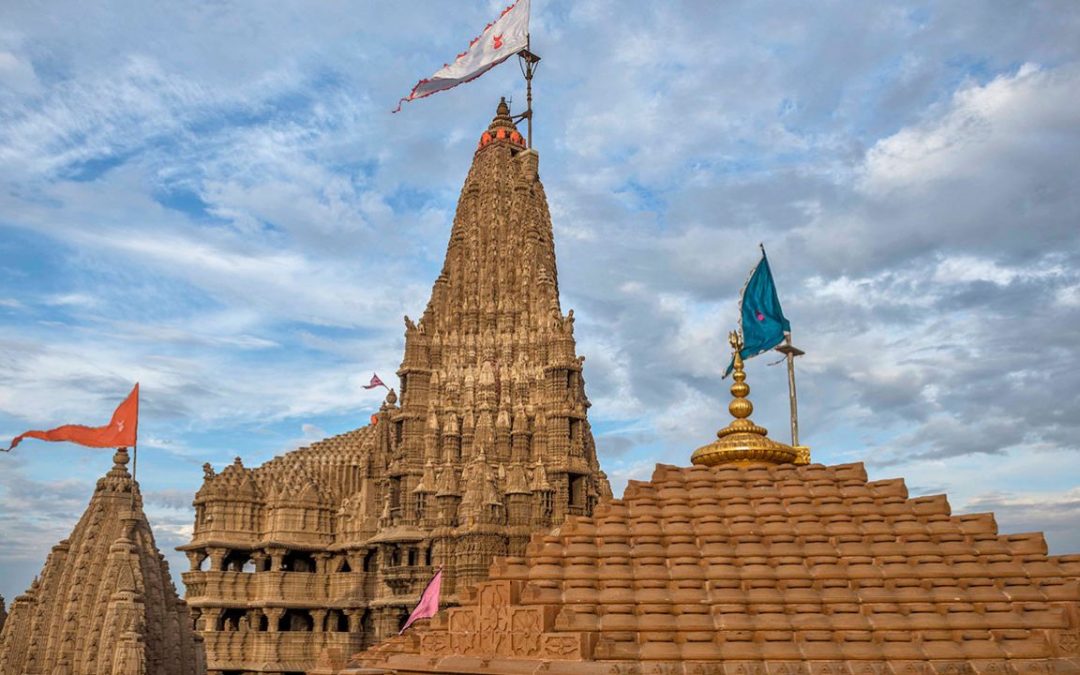Ranjitsinhji Jadeja was born on 10 September 1872 in Sadodar, a village in the state of Nawanagar in the western Indian province of Kathiawar in a Yaduvanshi Rajput family. His name meant “the lion who conquers in battle”.
Ranjitsinhji’s family were related to the ruling family of the state of Nawanagar through his grandfather, and head of his family, Jhalamsinhji. The latter was a cousin of Vibhaji, the Jam Sahib of Nawanagar; Ranjitsinhji’s biographers later claimed that Jhalamsinhji had shown bravery fighting for Vibhaji in a successful battle.
In 1856, Vibhaji’s son, Kalubha, was born, becoming heir to Vibhaji’s throne. However, as Kalubha grew, he established a reputation for violence and terror. Among his actions were an attempt to poison his father and a multiple rape. Consequently, Vibhaji disinherited his son in 1877 and, having no other suitable heir, followed custom by adopting an heir from another branch of his family, that of Jhalamsinhji. The first selected heir died within six months of being adopted, either through fever or poisoning on the orders of Kalubha’s mother. The second choice, in October 1878, was Ranjitsinhji. Ranjitisinhji’s later version of events, reported by his biographer Roland Wild, was that his adoption had been carried out in secret, for fear of Vibhaji’s wives. According to Wild, “The boy’s father and grandfather watched the ceremony which was officially recorded by the India Office, the Government of India, and the Bombay Government. In October 1884, the Government of India recognised Jaswantsinhji as Vibhaji’s heir, but the Viceroy, Lord Ripon believed that Ranjitsinhji should be compensated for losing his position.
In March 1888, Macnaghten took Ranjitsinhji to London, with two other students who exhibited potential. One of the events to which Macnaghten took Ranjitsinhji was a cricket match between Surrey County Cricket Club and the touring Australian team. Ranjitsinhji was enthralled by the standard of cricket, and Charles Turner, an Australian known more as a bowler, scored a century in front of a large crowd; Ranjitsinhji later said he did not see a better innings for ten years. Macnaghten returned to India that September but arranged for Ranjitsinhji and one of the other students, Ramsinhji, to live in Cambridge.
At first, Ranjitsinhji had hoped to be awarded a Blue at tennis, but, possibly inspired by his visit to see the Australians play in 1888, he decided to concentrate on cricket. In 1889 and 1890, he played local cricket of a low standard, but following his stay in Bournemouth, he set out to improve his cricket. In June 1891 he joined the recently re-formed Cambridgeshire County Cricket Club and was successful enough in trial matches to represent the county in several games that September. His highest score was just 23 not out, but he was selected for a South of England team to play a local side—which had 19 players to make the match more competitive—and his score of 34 was the highest in the game. However, Ranjitsinhji had neither the strength nor the range of batting strokes to succeed at this stage.
One Cambridge University cricketer believed that Ranjitsinhji should have played for the team in 1892; he played in two trial games with moderate success, but Jackson believed he was not good enough to play first-class cricket. Jackson was probably also the reason Ranjitisinhji did not play cricket for Trinity College until 1892, despite his success for other teams. Jackson himself wrote in 1933 that, at the time, he lacked a “sympathetic interest for Indians”, and Simon Wilde has suggested that prejudice lay behind Jackson’s attitude. Jackson also said in 1893 that underestimating Ranjitsinhji’s ability was a big mistake. However, Ranjitsinhji made his debut for Trinity in 1892 after injury ruled out another player and his subsequent form, including a century, kept him in the college team, achieving a batting average of 44, only Jackson averaging more.
Ranjitsinhji played several large innings at the start of the 1896 season, scoring faster and impressing critics with more daring shots. Before June, he had hit hundreds against the highly regarded Yorkshire bowlers and in match-saving performances against Gloucestershire and Somerset and became the second batsman, and first amateur, to reach 1,000 runs in the season. Innings of 79 and 42 against the touring Australian team underlined his status as one of the few batsmen to cope with the visitors’ bowling spearhead, the highly regarded Ernie Jones; he concentrated on the leg-glance and cut shot, which the Australians were unable to counter through altered tactics.
Ranjitsinhji made his Test debut on 16 July 1896. After a cautious 62 in his first innings, he batted again when England followed on, 181 runs behind. After the second day, he had scored 42 and on the final morning, he scored 113 runs before the lunch interval, surviving a fast, hostile spell from Jones and playing many shots on the leg side to reach the first century scored that season against the tourists. His final score was 154 not out, and the next highest score for England on the last day was 19.
He was given an enthusiastic reception by the crowd and the report in Wisden stated: “The famous young Indian fairly rose to the occasion, playing an innings that could, without exaggeration, be fairly described as marvellous. He punished the Australian bowlers in a style that, up to that period of the season, no other English batsman had approached. He repeatedly brought off his wonderful strokes on the leg side, and for a while had the Australian bowlers quite at his mercy.”
In the first Test against the Australians, who were touring England once again. He was selected in this series and after scoring 42 in the first innings, he hit 93 not out in the second which ensured England drew the match after losing early wickets on the last day. His tactics were unorthodox as he took risks to ensure that he faced most of the bowling, even though he was batting with recognised batsmen. However, as the innings progressed, he rediscovered his batting touch.
During June, he scored 1,000 runs: he scored four centuries, including a score of 197 which saved the game against Surrey, the eventual County Champions. He scored runs against the strong bowling of Lancashire and Yorkshire, and in August embarked on a sequence of 12 innings in which his lowest scores were 42 and 48 which enabled him to score 1,000 runs in August; no one had previously scored 1,000 runs in two separate months of the same season. In total, he scored 3,159 runs at an average of 63.18, becoming the first batsman to pass 3,000 first-class runs in a season, and made eight centuries.
Ranjitsinhji’s fame increased after 1896, and among the praise for his cricket were hints in the press that he intended to pursue a political career, following other Indians in England. Instead he began to turn his attention to the Nawanagar succession, beginning to make enquiries in India as to his position. Meanwhile, he began to cultivate potentially beneficial connections; at Queen Victoria’s jubilee celebrations, he established a friendship with Pratap Singh, the regent of Jodhpur, whom he later falsely described as his uncle.
Ranjitsinhji decided to return to India to further his case, prompted by the decision of Vibhaji’s grandson Lakhuba to dispute the succession. Meanwhile, the financial expectations of behaving as a prince pushed Ranjitsinhji even further into debt, and his allowance had been stopped after he had been given an advance on it to cover earlier money owed. He wrote to Willoughby Kennedy, the English Administrator of Nawanagar, asking for money but none was forthcoming.
In April 1898, Stoddart’s cricket team returned to England via Colombo. On arrival there, Ranjitsinhji left the team to return to India with the intention of pursuing his claim to the throne of Nawanagar. He spent the remainder of the year in India and did not return to England until March 1899. Initially, he tried to establish support for his claim, including his argument that Jassaji was illegitimate, among the Indian princes. Later, he met Pratap Singh, who had arranged for Ranjitsinhji to receive an honorary state appointment with an associated income. Pratap Singh also introduced him to Rajinder Singh, the Maharaja of Patiala, a very wealthy individual.
Rajinder was very pro-British and an enthusiastic cricketer and soon became friends with Ranjitsinhji; he subsequently provided Ranjitsinhji with another source of income. Ranjitsinhji travelled extensively throughout India, trying to build support among the princes and local officials, and received an enthusiastic reception from the public wherever he went. He also spent time with his mother and family in Sarador. He played plenty of cricket during his visit, with mixed success. Although he scored 257 in one game, in another he failed to score in either innings, the only time this happened to him in any form of cricket.
After alleviating some of his financial concerns through journalism and writing, Ranjitsinhji was able to return to cricket. Like the previous season, cricket in 1903 was badly affected by weather, resulting in many difficult batting pitches. Ranjitsinhji scored 1,924 runs at 56.58 to achieve second place in the national batting averages, but his consistency never matched that of his earlier years and he was frustrated by his form. He played more regularly for Sussex and missed just two matches but displayed a reduced commitment to the club and resigned the captaincy in December, Fry assuming the role.
In 1904, Ranjitsinhji led the batting averages for the fourth time, scoring 2,077 runs at 74.17. In a ten-week sequence between June and August, he scored eight hundreds and five fifties, including innings against strong attacks and the leading counties. This included a highest score of 207 not out against Lancashire where Wisden reported that “From the first ball to the last in that superb display he was at the highest pitch of excellence, and beyond that the art of batting cannot go.” However, he missed eight Sussex games in total, suggesting his commitments had begun to lie elsewhere.
Four years after his previous appearances, and now known as H. H. the Jam Sahib of Nawanagar, Ranjitsinhji returned to play cricket in England in 1908. Playing mainly in Sussex and London, he had put on weight and could no longer play in the same extravagant style he had previously used. Playing in many less competitive fixtures, he scored 1,138 runs at 45.52, finishing seventh in the averages.
Despite the discovery of an assassination plot on his life, in which Ranjitsinhji was implicated, Jassaji took over the administration of Nawanagar from the British in March 1903. Roland Wild later described it as “the shattering of [Ranjitsinhji’s] dreams”. During the 1904 season, Ranjitsinhji had a long meeting with Lord Curzon during a Sussex match. Immediately afterwards, he chose to miss three Championship games at short notice and visited Edith Borrisow in Gilling for 10 days; Simon Wilde suggests that Ranjitsinhji had at this point chosen to leave for India after the cricket season.
On 9 October 1904, Ranjitsinhji departed for India, accompanied by Archie MacLaren, with whom Ranjitsinhji had developed a close friendship on the tour to Australia in 1897–98, and who now became his personal secretary. In India, Ranjitsinhji and MacLaren were joined by Mansur Khachar and Lord Hawke, the Yorkshire captain. Ranjitsinhji tried unsuccessfully to arrange an official meeting with Curzon to discuss the succession to Nawanagar and then chose to remain in India to cultivate his relationships with British officials, although there was little chance he could achieve much with regard to Nawanagar.
Ranjitsinhji returned from England to find that many of his staff had left and several assassination plans had been uncovered. Rumours spread that he was about to abdicate. Despite the help of British officials, he made several controversial decisions, accumulated expensive possessions and attempted to increase his income. He tried to reclaim land given away by previous rulers and although he reduced revenue taxation, he imposed an additional land rent which, coupled with severe drought, led to rebellion in some villages; Ranjitsinhji ordered his army to destroy them in retribution.
When the First World War began in August 1914, Ranjitsinhji declared that the resources of his state were available to Britain, including a house that he owned at Staines which was converted into a hospital. In November 1914, he left to serve at the Western Front, leaving Berthon as administrator. Ranjitsinhji was made an honorary major in the British Army, but as any serving Indian princes were not allowed near the fighting by the British because of the risk involved, he did not see active service. Ranjitsinhji went to France but the cold weather badly affected his health and he returned to England several times.
On 31 August 1915, he took part in a grouse shooting party on the Yorkshire Moors near Langdale End. While on foot, he was accidentally shot in the right eye by another member of the party. After travelling to Leeds via the railway at Scarborough, a specialist removed the badly damaged eye on 2 August. Ranjitsinhji’s presence on a grouse shoot was a source of embarrassment to the authorities, who attempted to justify his presence in the area by hinting at his involvement in military business. He spent two months recuperating in Scarborough and after attending the funeral of W. G. Grace in Kent, he went to India for his sister’s marriage and did not return to England before the end of the war.
While Ranjitsinhji was in Europe at the start of the war, Berthon remained in Nawanagar as Administrator and began to implement modernisation programmes. He organised the clearance of slums in Jamnagar and new houses, shops and roads were built.
Ranjitsinhji was given more outward displays of favour, including the upgrading of Nawanagar to a 13-gun salute state and the centre of its liaison with the British was transferred from the Government of Bombay to the Government of India. Furthermore, Ranjitsinhji personally was entitled to a 15-gun salute and officially granted the title of Maharaja.
Nawanagar’s finances were improved further by the construction of a port at Bedi. Encouraged by the British, the port was successful and thanks to favourable costs and charges it was used by many traders. As a consequence, Nawanagar’s revenue more than doubled between 1916 and 1925. Although Ranjitsinhji had no children, he was very close to his nephews and nieces; they lived in his palaces and he sent them to Britain to study. He encouraged his nephews to take up cricket, and several of them had minor success in school cricket. The most effective was Duleepsinhji; critics spotted a similarity to Ranjitsinhji in his style, and he had a successful county and Test career.
In 1927, Ranjitsinhji came under attack from the All India States Peoples Conference which accused him, among other things, of being an absentee ruler, high taxes and restricting liberties. He responded through supporting published works by different authors, including Jamnagar and its Ruler in 1927, Nawanagar and its Critics in 1929 and The Land of Ranji and Duleep in 1931.
Ranjitsinhji died of heart failure on 2 April 1933 after a short illness. McLeod recounts that “many” contemporary observers attributed Ranji’s death to an angry comment made publicly by Lord Willingdon, the Viceroy of India in the Chamber of Princes. Ranji had felt that he was speaking in defence of British interests and, The Morning Post said, “Feeling himself rebuked by the Power he wished to save, … he lost all desire to live”.
After his death, the Board of Control for Cricket in India (BCCI) started the Ranji Trophy in 1934, with the first fixtures taking place in 1934–35. The trophy was donated by Maharaja Bhupinder Singh of Patiala, who also inaugurated it. Today it remains a domestic first-class cricket championship played in India between different city and state sides.
